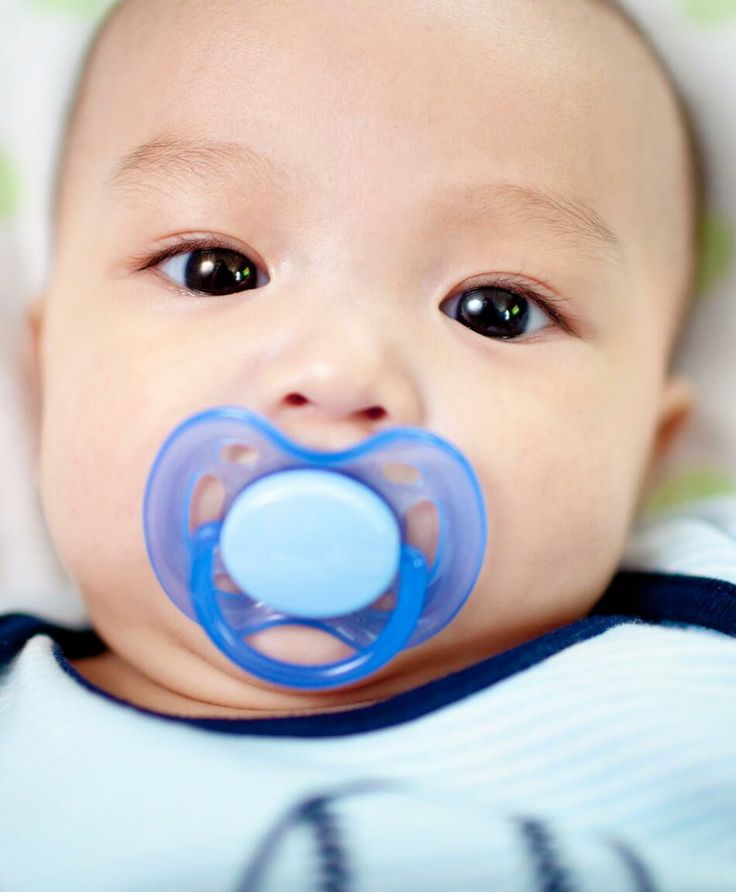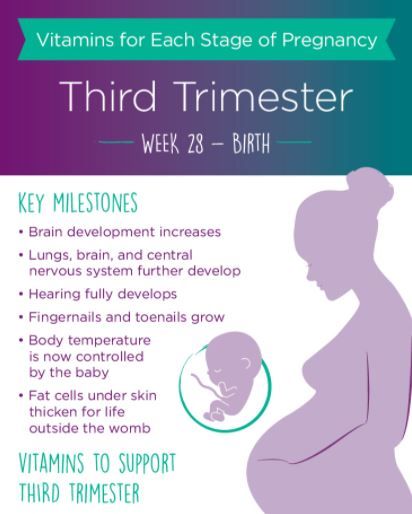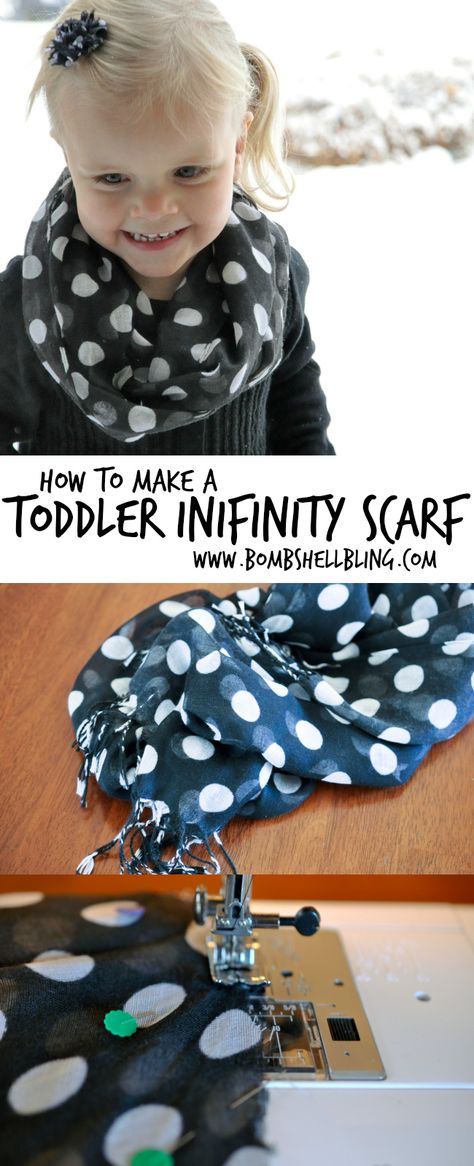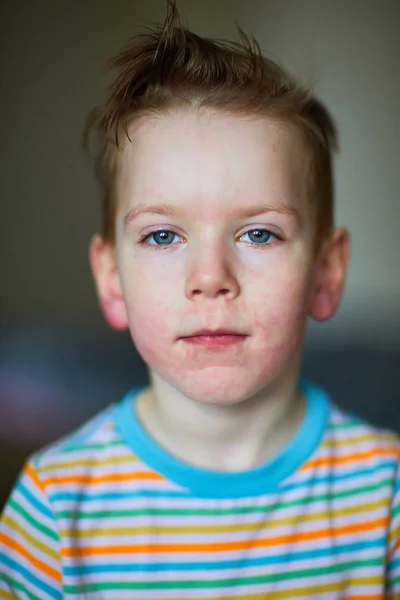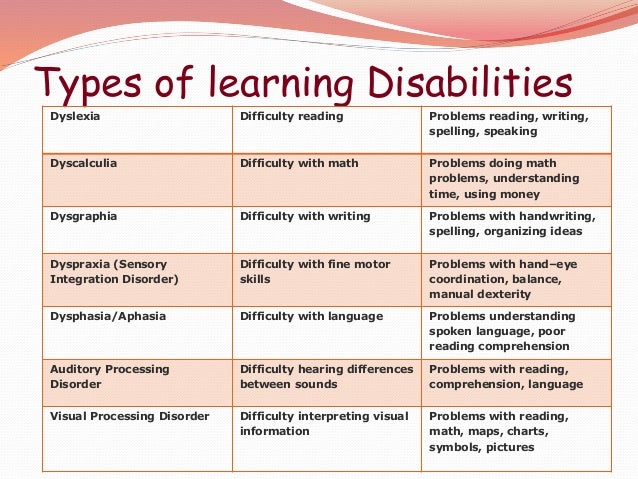How to discipline a child who hits others
Why It Happens and How To Make It Stop
We’ve all been there: You’ve been enjoying a calm playdate with other moms, and then suddenly the peace is cut short when one toddler hits another — with plentiful shrieks, cries, and whines erupting.
While kids, especially toddlers, often hit each other during playtime, it can become stressful for parents trying to figure out the best way of handling this behavior.
It can feel awkward to be the parent whose child is hitting others on the playground or at day care, and you may be wondering what interventions work best to solve this problem.
On the other hand, your child may suddenly be hitting you, or a sibling, and you may be suffering in private, wondering if you’ve done something wrong.
Rest assured, you are not alone in this worry, and whether your child is hitting you or others, there are clear steps you can take to resolve the problem.
They are testing limits
Like many toddler behaviors (chucking applesauce at your work blouse, screaming in high-pitched tones during rush hour traffic), hitting has a common theme: to test the limits of what is acceptable.
What will happen if I do this? Finding out their brother cries when hit with a stick or that beating on a drum is not the same as hitting their mom is all part of their learning process.
They haven’t developed self-control
If you are dealing with a toddler, their impulse controls are basically nonexistent. They feel frustrated or happy or bored, they express that through hitting — no hesitation.
The good news is they start to show positive growth in this area, according to research, between ages 3 and 9 (with more significant development in girls than boys in this area). The bad news is between ages 3 and 9 is a pretty wide range when you’re struggling right now.
They don’t understand it is bad
It’s also true that toddlers sometimes use force without being provoked by others, which supports the idea that they just want to see what will happen, and don’t yet have the moral compass or understanding that they can, but shouldn’t, hurt others.
Scientists have studied this phenomenon in 11- to 24-month-old toddlers and have concluded that in most cases, the children were not in distress at all when hitting others.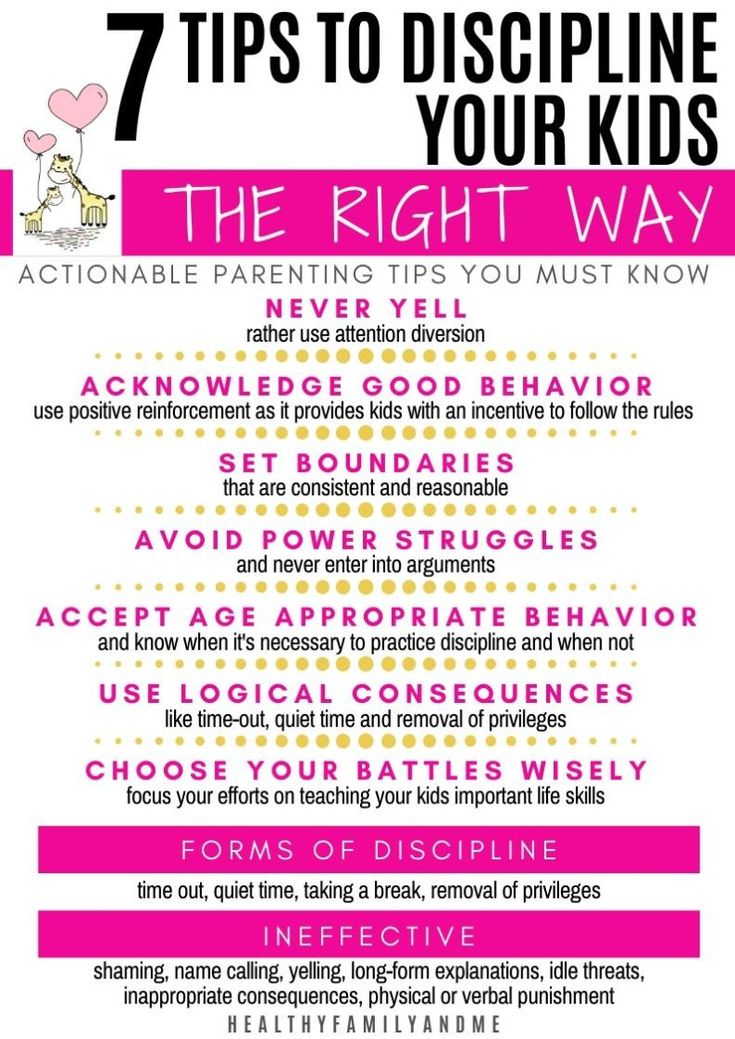
They don’t know how to process their feelings
Another reason toddlers resort to hitting, both themselves and others, is because it is their way of handling their “big” emotions.
They feel frustrated, but unlike an adult who may calmly explain the feelings of frustration to their partner or trusted friend, toddlers often don’t have the language capacity or self-control to stop, examine how they are feeling, and react in a way that’s socially acceptable, appropriate, or helpful.
Toddlers may want something, or feel angry, or feel they’ve been wronged by their friend in some way. Let’s be honest, if someone knocked over the huge block tower you’d been building for a half hour, you might want to hit them too.
Luckily, hitting is not just a “phase you have to deal with” as a parent, and there are concrete steps you can take to prevent, control, and redirect toddlers who are hitting.
While each of the following options may not work for every child, you as the parent can judge which will work for you. And don’t be afraid to explore multiple options through trial and error to see which is most beneficial for your child.
And don’t be afraid to explore multiple options through trial and error to see which is most beneficial for your child.
Restrain them physically
Your instinct may be to physically hold your toddler back when they are trying to hit others. If you feel your child is out of control, or that being physically secure helps to calm them down, this could be an option for you.
If your toddler is strong this could be physically difficult depending on your own size, strength, and ability. Physically restraining your toddler should not be painful to them in any way, but rather like a calm and firm hug that prevents them from hitting themselves or others.
You may also want to speak calmly to them, letting them know that you’re holding them because you can’t allow them to hurt anyone. Once the moment has passed you can redirect them to other behaviors.
If your toddler reacts negatively to being restrained, it may be more effective to consider one of the following options instead.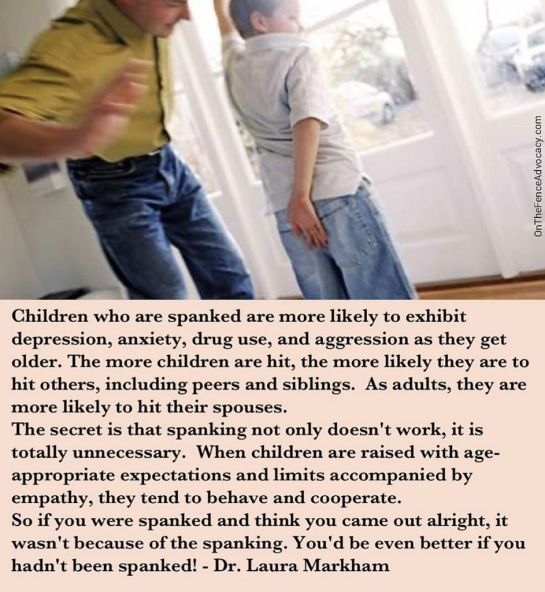
Remove your child from the situation
We’ve all heard it before, maybe from our own parents: “If you don’t stop, I’m taking you to the car (or your room).” Is it effective? For some, yes.
Calmly removing a child from the situation can be one of the best solutions to a hitting problem. Be prepared that you may have to do it more than once for a child to realize that there will be a clear consequence, involving not being able to play with others for a bit if they hit.
Where you take them depends on where you are. The car can be effective if you are in public or at another person’s house. If you are in your own house, choose a calm, quiet location away from other activity to help them refocus.
Once you’re away from the situation, you may want to discuss, reevaluate, and calm down. How much time you spend on each of these depends on many factors, including your toddler’s age and ability to understand and your patience at the moment.
It’s okay take a break and try again and it’s also okay to decide it’s time to call it a day.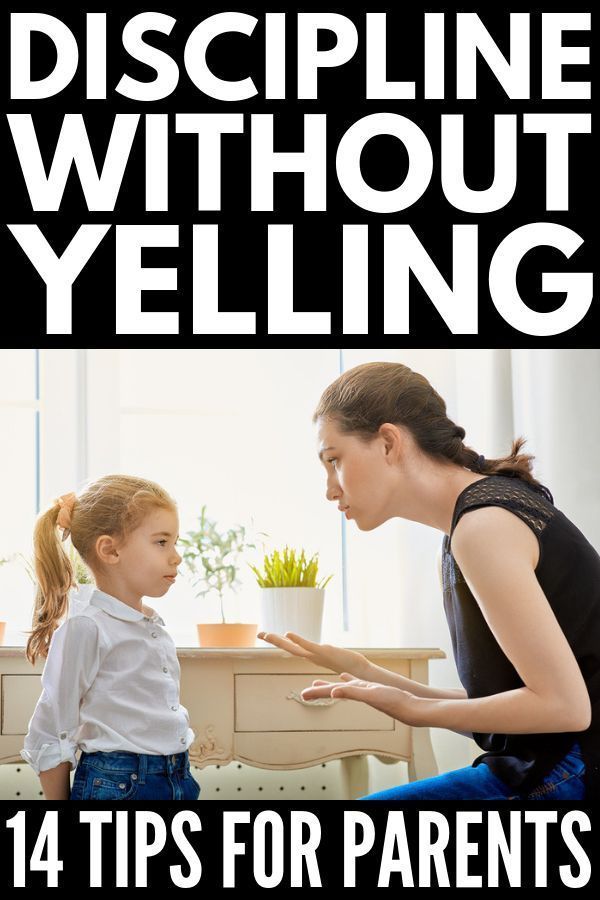
Discuss alternatives
It may not have even occurred to your child that there are other ways to deal with frustration, jealousy, anger, and other emotions unless you have explicitly taught and modeled these reactions.
When a friend of theirs grabs a toy they wanted, what are other possible reactions they could have instead of hitting? Make sure you’re modeling behaviors like speaking up, walking away, or telling an adult about problems.
Your toddler needs you to teach them their options, but this takes time to learn and time to reach a developmental stage where this will be effective.
Redirect
Especially with young toddlers, redirecting them to do a more appropriate behavior can help them forget about the urge to hit something. For example, with 1- to 2-year-olds, you can hold the hand that they were using to hit and showing them gentle touch.
If they persist, distracting them from the negative behavior with another activity may work. However, it’s important to make sure that hitting is not getting more attention than not hitting.
If every time they hit you’re suddenly willing to play, it may inadvertently increase hitting. Make sure you’re providing positive reinforcement when they aren’t engaging in hitting.
Provide emotional support
If hitting seems to be the result of mismanaging emotion, you can try teaching more options for emotional expression, such as what various feeling words mean, in an age-appropriate way.
How you explain frustration to a 5-year-old may be much different than to a 2-year-old, but both can learn dialogue to express being mad, frustrated, stressed, and other related emotions.
Others literally just need a hug and some emotional support for the big feelings they have.
Prevent hitting before it begins
Observe your child’s behaviors that typically happen in the moments leading up to hitting. What are their typical triggers that cause them to hit themselves or others?
Some children make frustrated noises, for example, almost like a dog growling, while others start whining about the problem. You may see your toddler approaching another child by running towards them, giving you a hint that the hitting is about to be an issue.
You may see your toddler approaching another child by running towards them, giving you a hint that the hitting is about to be an issue.
By identifying these triggers and behaviors, you’re more likely to be able to stop them before it happens, either by talking them through other options, or physically stopping them from the action.
Hit or spank
While spanking remains a controversial topic in parenting circles worldwide, research is pretty clear that it can cause more harm than good.
A 2017 study, for example, shows the correlation between spanking and behavioral issues. The authors found that children who had been spanked by their parents at age 5 were reported by teachers to have significantly higher increases in behavior problems — such as arguing, fighting, showing anger, acting impulsively, and disturbing ongoing activities — by age 6 than children who had never been spanked.
In addition, if you’re trying to model positive behavior to help your child avoid hitting, it may be confusing to them if you, yourself, are hitting.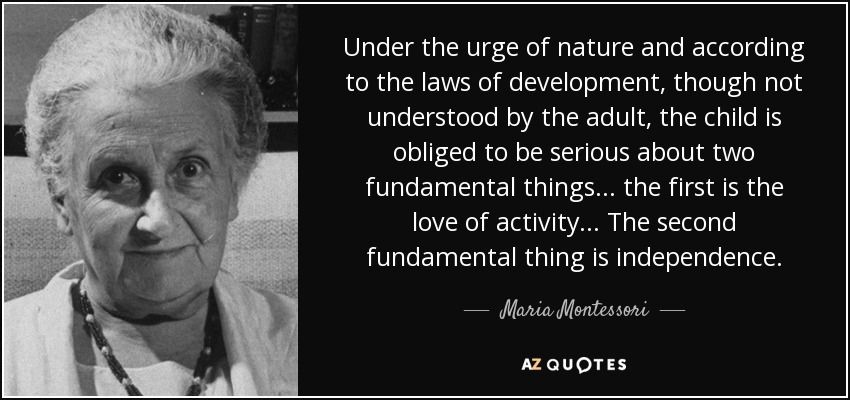 Avoid power struggles that involve use of force.
Avoid power struggles that involve use of force.
It’s one thing to walk or carry your toddler to their time-out spot, and another to forcefully punish them in time-out. If your child is attempting to leave the time-out you have established, avoid being rough with them and instead calmly place them back in their time-out spot, explaining what needs to happen, when they can get up, and other details.
Yell or react with anger
Toddlers do well with calm, firm reactions, rather than screaming, yelling, and acting out in anger.
Even though the situation can be truly frustrating, taking a second to control your own emotions before teaching your toddler will help them see you as an authority figure who’s in control of their body, voice, words, and expressions.
Base your reaction on other parents
There’s a constant feeling of mom guilt, mom shaming, and peer pressure in circles of parents when it comes to behavioral choices. Don’t allow these feelings to dictate which choices you make to help your child with their hitting behaviors.
When you find yourself changing your reaction based on your environment or peers, step back to re-evaluate your parenting values through self- reflection or conversation with your partner.
Avoid contributing factors
As with many toddler behaviors, the real problem may not be the behavior itself, but how the child is feeling otherwise.
Are they teething? Did they get enough sleep or is it approaching nap time? Have they had nutritionally sound meals and snacks at frequent enough intervals today, or could they be hungry when they are hitting? Are they frustrated about something else, which could contribute to them lashing out by hitting?
Running through the list of other possibilities can help you resolve the problem if there’s an easy fix like these.
Give opportunities for physical activity
If you’ve ever found your kids to be restless, saying, “They just need to get out and run around,” you already know the truth behind the correlation between physical activity and behavior.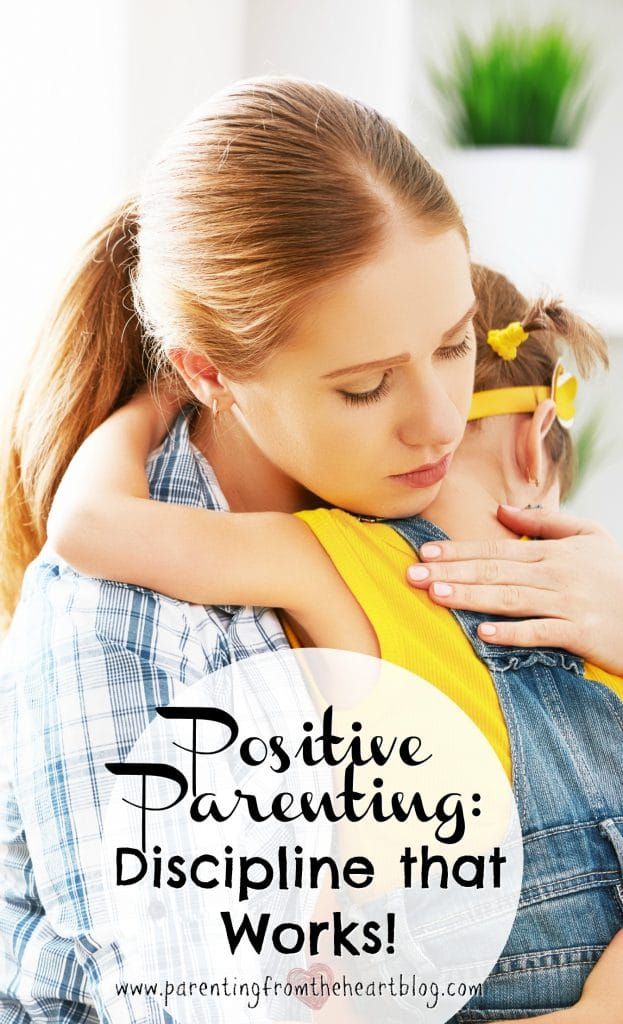
Adults and children alike are happier, healthier, and better able to control behaviors when they’ve had enough physical activity. Allow your child to engage in physical activities like banging on a drum, stomping their feet, running around, jumping, playing on playgrounds, and anything else that will help them move.
Get all caregivers on the same page
What if you, your parents, and your babysitter are all treating the hitting behavior in three different ways? Maybe grandma is laughing it off, saying “no, no,” and moving on, while you are using time-outs. Maybe the babysitter is using different verbiage than you when discussing emotions with the child.
Having a conversation with all your child’s caregivers can ensure you are attacking the problem with the same strategies to ensure a united front and quicker resolution.
It’s okay and normal to feel frustrated and out of control when your toddler hits themselves or others.
Sometimes, children are just experimenting with others’ reactions to their behaviors, and sometimes they are frustrated, tired, or unwilling to share their toys. Approach your toddler’s behavior with a calm demeanor, and make a plan with all caregivers on which course of action you should take.
Approach your toddler’s behavior with a calm demeanor, and make a plan with all caregivers on which course of action you should take.
Rest assured that over time, and with your intentional guidance, this too will pass.
10 Steps to Stop Your Child From Hitting Other Kids
"Odd as it may seem, children who hit are children who are afraid. The fears that cause trouble for a child who hits usually have their roots in some frightening experience earlier in her life, even though she may not seem frightened at all. To manage her fear, the frightened child develops aggressive behavior that flares any time she feels tense. Instead of crying or saying she feels scared when her fears are triggered, she tightens up, can’t ask for help, and lashes out." —Patty Wipfler
Most of us feel mortified when our child hits another child. We may know intellectually that he's lashing out because he's overwhelmed or scared, but we still feel like it's an emergency. His aggression triggers our "fight or flight" response — and suddenly our own child looks like the enemy.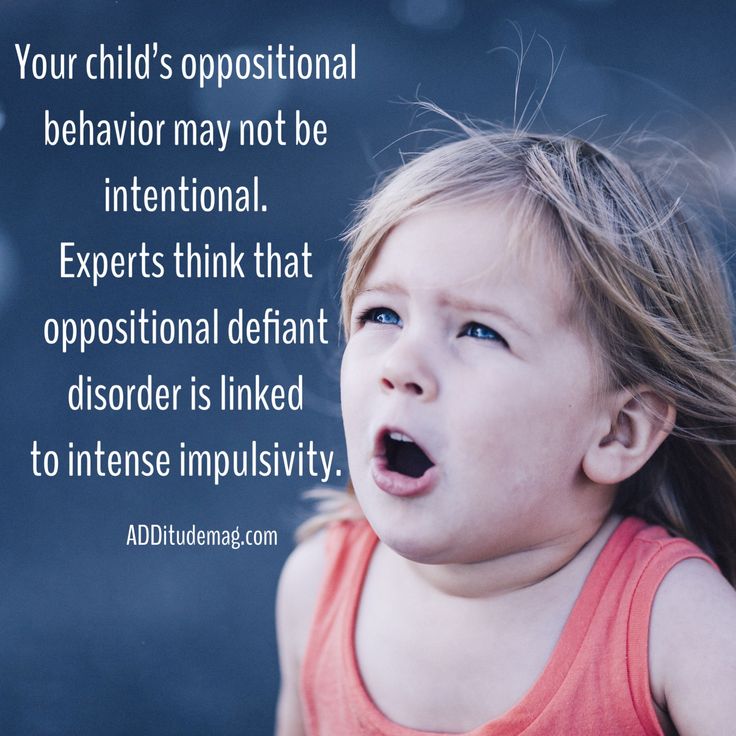 We feel an urgent need to take action. Punishing action.
We feel an urgent need to take action. Punishing action.
But punishing a child who hits doesn't stop the hitting. It just increases the child's fear, making future hitting more likely. To stop the hitting once and for all, you have to address the feelings that are driving the hitting. Here's how.
1. Prevent hitting if possible. You may think you can't see it coming, but if your child often hits in social situations, you can predict that hitting is likely in any social situation, until you do some intervention. The best prevention is the normal preventive maintenance that all kids deserve: Empathy as your go-to response to everything your child expresses, daily roughhousing, daily one-on-one time with each child, routines to help your child feel safe, and scheduled meltdowns. Preventive maintenance keeps your child in good shape emotionally, so he's less likely to hit or end up in the breakdown lane.
But how do you prevent hitting in a situation with other kids? Stay very close, so your child feels more connected to you.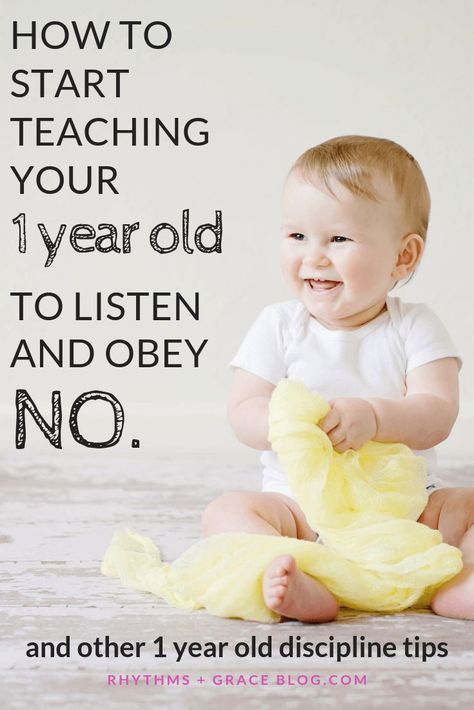 That way, whatever happens, he feels like he can handle it, because he has backup — so he's less likely to lash out. You're also better able to monitor his mood. If you notice him getting tense, move in close physically, between him and the other child. Your presence may calm him, or it may escalate his upset, in which case you can breathe deeply, move him slightly away from the other kids, and skip to Step 7. The good news? You're helping your child with the feelings that were driving his hitting, and no one else even had to get hurt!
That way, whatever happens, he feels like he can handle it, because he has backup — so he's less likely to lash out. You're also better able to monitor his mood. If you notice him getting tense, move in close physically, between him and the other child. Your presence may calm him, or it may escalate his upset, in which case you can breathe deeply, move him slightly away from the other kids, and skip to Step 7. The good news? You're helping your child with the feelings that were driving his hitting, and no one else even had to get hurt!
2. If your child does hit, breathe. Remind yourself: She's hitting because she's scared. I can handle this. She needs my compassion now. Get between her and the other child to prevent more violence. Model self-regulation by consciously lowering your voice, breathing deeply, and blowing out your tension.
3. Model care and repair. Hopefully, there is another adult present to care for the child who was hit.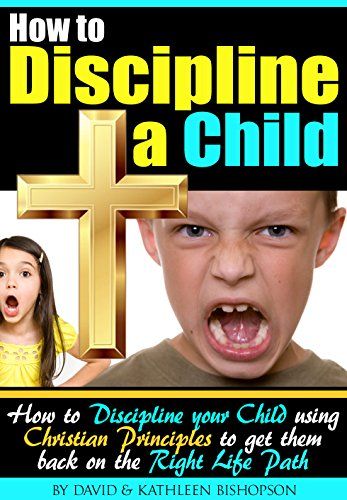 If not, you'll need to hold and comfort that child. This also gives you a minute to calm yourself before interacting with your own child, so you aren't raging at her.
If not, you'll need to hold and comfort that child. This also gives you a minute to calm yourself before interacting with your own child, so you aren't raging at her.
When the hurt child has calmed, put your arm around your child, and face the other child together. Tell the other child "We are so sorry that Kira (or whatever your child's name is) hit you. She was upset and forgot to use her words. We hope you feel better now."
4. Avoid blame. You can help your child develop empathy by pointing out the effect of her hitting on the other child: "Ouch, Samantha is hurt...hitting hurts!" But making your child feel like a bad person will just backfire: "Mom says what I did was bad...but I couldn't help myself...I must be bad....what if she stops loving me because I am so bad?" This fear is what causes that blank stare we so often see after a child is aggressive. Lecturing about what she's done wrong scares her and puts her on the defensive. So she stares us down, hardening her heart.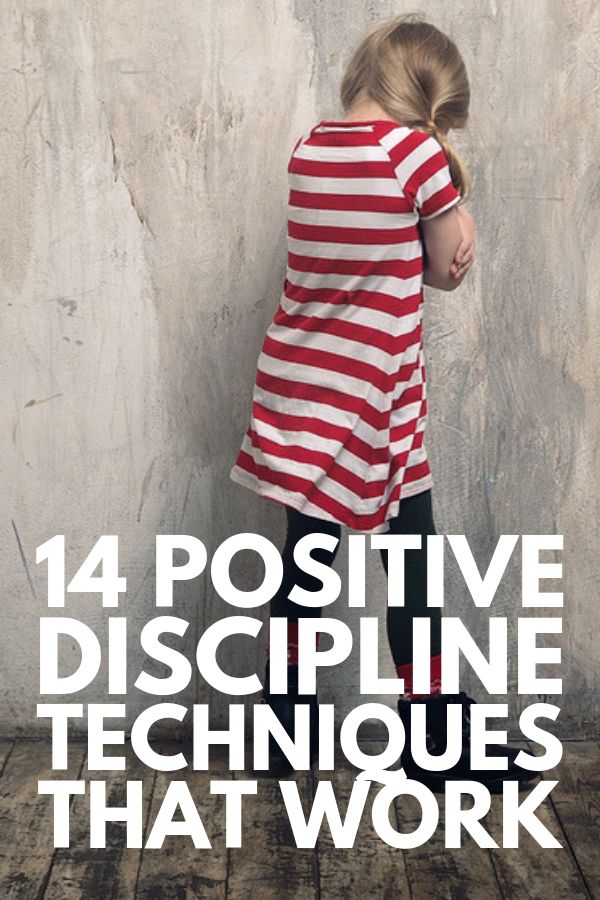
See it from your child's perspective. Your child is a little person who is easily overwhelmed in this big world. He gets over-stimulated and disconnected from you and feels all alone and terrified. Or, he has some fear locked up from a past experience, and in this new situation, he just can't manage all his anxiety so his past fears start bubbling up. He can't bear those feelings. So he lashes out. If you can remember all this, you'll feel more sympathy for him. You need that sympathy, because your child won't soften his heart unless you soften yours.
5. Remove your child. Take 10 more deep breaths. Tell your child "Hitting hurts...It was too hard for you with the other kids...we need some time by ourselves to calm down." Don't be mean about it; be kind and understanding. You aren't punishing; you're taking preventive action. Until you help your child with his feelings, he'll almost certainly keep hitting. So remove him from the situation to give him a chance to cry, or to laugh—both of which help him work though fear. Once you help him feel safe enough to tolerate and feel those tears and fears, they'll evaporate, and the hitting will stop.
Once you help him feel safe enough to tolerate and feel those tears and fears, they'll evaporate, and the hitting will stop.
6. Resist the urge to lecture. Shouldn't you tell your child that hitting is not OK? Of course! But doesn't he already know that? He just couldn't stop himself. What's important right now is helping him process his feelings, so that he can act the way he knows he should. And he won't surface those feelings unless he feels safe. Telling him what he did wrong doesn't help him feel safe. Later, you'll teach. First, address feelings: "You must have been so upset to hit Samantha....I'm sorry I wasn't here to help....I am right here...You are safe..."
7. Welcome the meltdown. If he has a meltdown because you took him out of the play situation, remind yourself that he's showing you all the overwhelm that led him to hit, and getting it out of his system. That's a good thing. Just breathe your way through it. The more tears, the more feelings he's unloading, and the better he'll feel afterwards.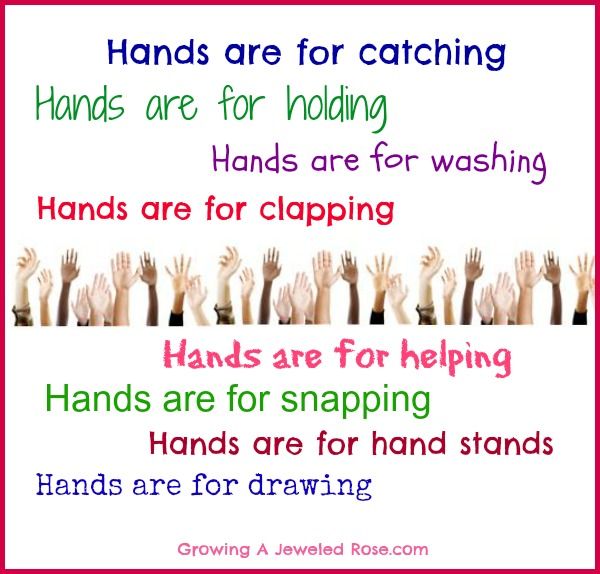 Offer your warmth more than your words. Talk only enough to stay connected and help him feel safe. Don't start analyzing his feelings. Just stay compassionate so he can cry.
Offer your warmth more than your words. Talk only enough to stay connected and help him feel safe. Don't start analyzing his feelings. Just stay compassionate so he can cry.
8. What if she doesn't cry? Soften your own heart. Empathize with how hard it is for her: "You hit Samantha...you were so upset...I wasn't there...you were worried...That was so hard for you, wasn't it...." If she still doesn't cry, letting her back into the play situation is risky, because she's still likely to hit. Move on to teaching, but be aware that you'll need to get her laughing before you go back with the other kids, or more hitting is likely.
9. Once both you and your child are calm, teach. This doesn't mean lecture. Think of this as inviting your child to reflect on better ways to handle those feelings, that he might even remember the next time he gets mad at the playground. Do it with a light touch and a sense of humor. You might even need to wait a few hours to have this conversation, until you can do it calmly.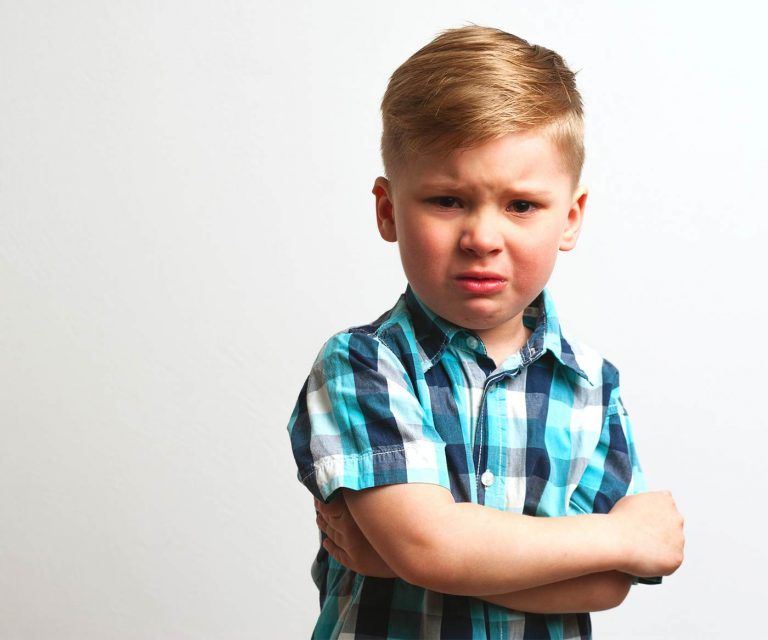 Say "Remember at the park today when you hit that little boy? Remember how upset he was? That hurt him. Ouch! What happened?"
Say "Remember at the park today when you hit that little boy? Remember how upset he was? That hurt him. Ouch! What happened?"
Listen to him and reflect: "You were mad at him?...The sandbox was too crowded...tell me more..."
Then help him explore alternatives: "Next time, when you get mad, what else could you do instead of hurting the other person?" Let him answer. If he needs help thinking of alternatives, offer some: "Could you call me? Could you walk away? Could you stomp your foot?"
Then have him practice these responses, so he has muscle memory of them: "OK, let's practice. This stuffed animal tries to grab your truck. See? You are so mad and want to hit him. But you remember there are other things you can do! So you call me, OK? I am right over here talking to another mom. Call me loud — Mom! — and I will come. Call me right now."
10. Notice your own feelings. You have some big feelings about this, too, especially if your child is hitting with any regularity.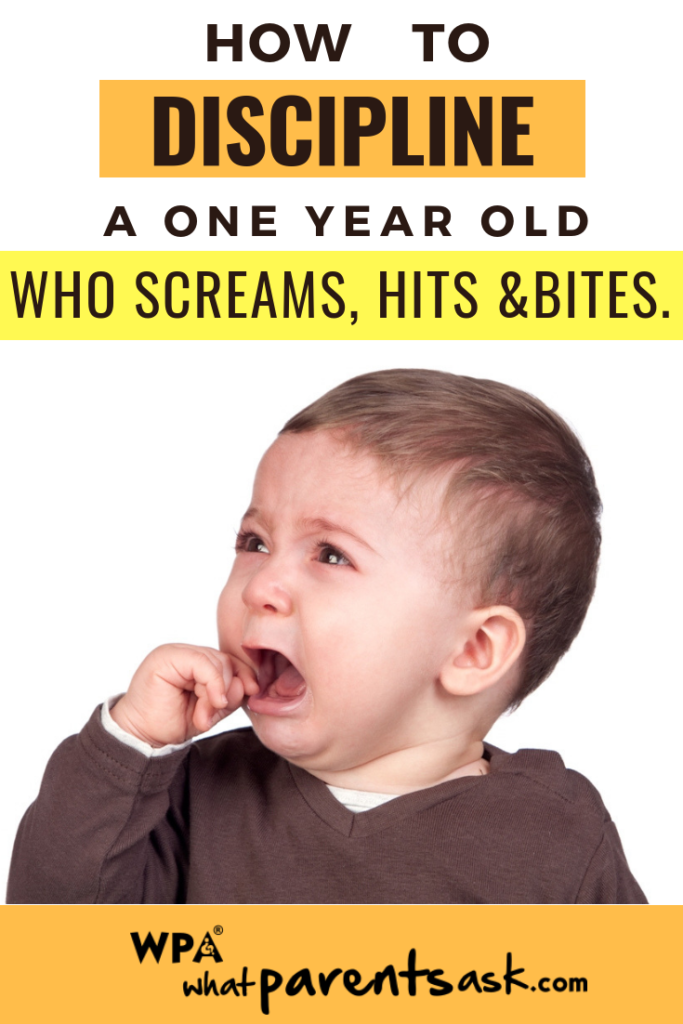 Behind your anger there's probably fear. Fear that something is wrong with your child, or you're a bad parent, or he'll be an axe murderer. None of these things are true. But you need to let that fear come up and feel it, so it's exposed to the light of day. Then it will shrivel up and blow away and you'll be better able to help your child.
Behind your anger there's probably fear. Fear that something is wrong with your child, or you're a bad parent, or he'll be an axe murderer. None of these things are true. But you need to let that fear come up and feel it, so it's exposed to the light of day. Then it will shrivel up and blow away and you'll be better able to help your child.
When we're afraid, our children pick it up, and get more tense. That anxiety actually makes it more likely that they'll lash out. So you're not causing your child's hitting, or her big feelings. But when you can manage your fear and stay compassionate, your child feels safe enough to work through her own fear.
And when there's no more fear, there's no more hitting. Isn't that the future we all want to create?
reasons for what to do, advice from psychologists
Contents
- Often sees conflicts between loved ones
- Trying to attract attention
- Unable to cope with negative emotions
- Aggressive and active type of temperament
- Punishment must be adequate
It is not uncommon for a child who is calm at home to be complained about in a kindergarten or elementary school: it turns out that there he offends or even beats children.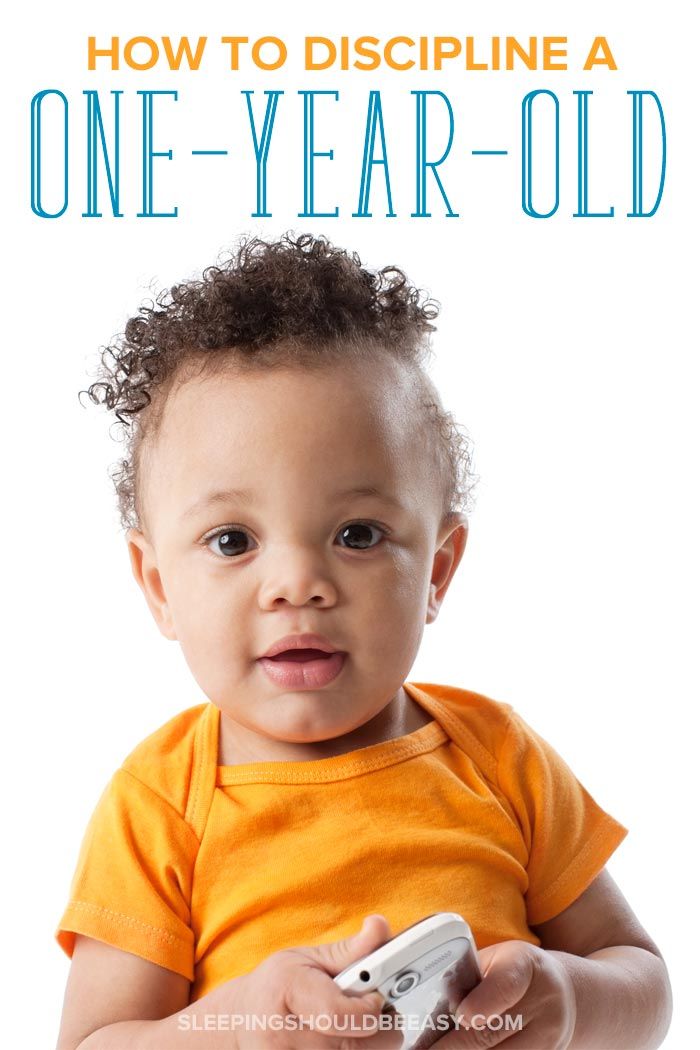 Or it happens that in society a child behaves well, but at home raises a hand against younger or older brothers and sisters. It also happens that aggression is manifested everywhere, and there seems to be no apparent reason for such behavior. So why does a seemingly normal child hit other children? nine0003
Or it happens that in society a child behaves well, but at home raises a hand against younger or older brothers and sisters. It also happens that aggression is manifested everywhere, and there seems to be no apparent reason for such behavior. So why does a seemingly normal child hit other children? nine0003
Childish aggression can be divided into two types:
- Instrumental . It arises from the impossibility of achieving the goal: for example, when a child is not allowed to watch a cartoon at a later time or refused to buy ice cream.
- Hostile aggression is caused by a desire to take revenge, to hurt another person. It also arises because of the desire to dominate and, as a rule, is observed at the age of 6-8 years.
If a child beats other children, then in no case should this be treated with indifference
Parents should understand that children's aggressiveness can take on serious proportions.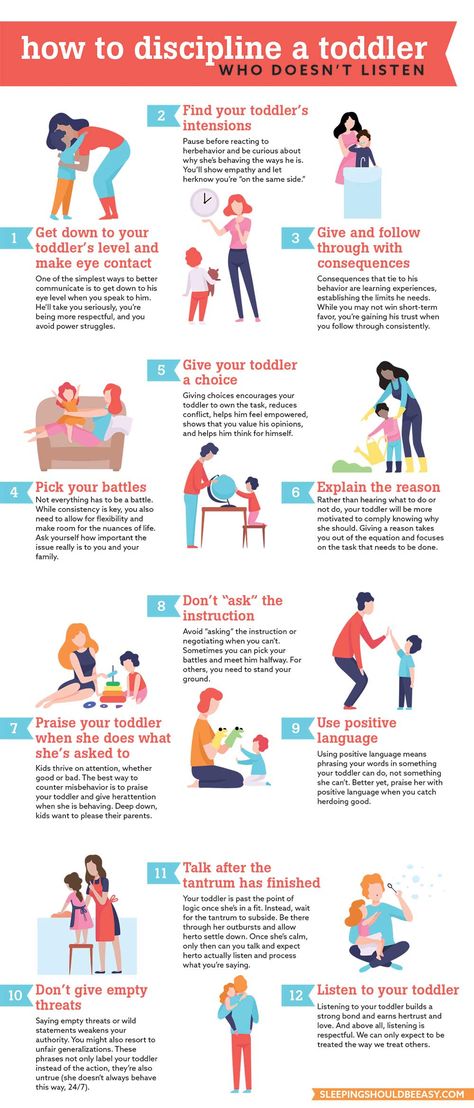 This issue must be resolved immediately, but not with punishments, which can adversely affect the fragile child's psyche. The task of parents is to help the child form the correct model of behavior in society. To understand how to deal with such a child, understand the reason why he hits other children.
This issue must be resolved immediately, but not with punishments, which can adversely affect the fragile child's psyche. The task of parents is to help the child form the correct model of behavior in society. To understand how to deal with such a child, understand the reason why he hits other children.
Reasons why a child hits other children
Often sees conflicts between close people
If parents speak loudly and openly show aggression, then the child begins to imitate. Accustomed to living in an atmosphere of hostility and anger, the kid offends his peers, simply copying the model of adult behavior. In no case should you quarrel and shout, sorting out the relationship with the child. Try to become a role model, a standard of behavior.
Trying to attract attention
When the child is calm and does not create problems, the parents go about their business and do not find time for it. Attention is paid only when something is done wrong: a cup is broken, a new toy is broken, the right thing is damaged.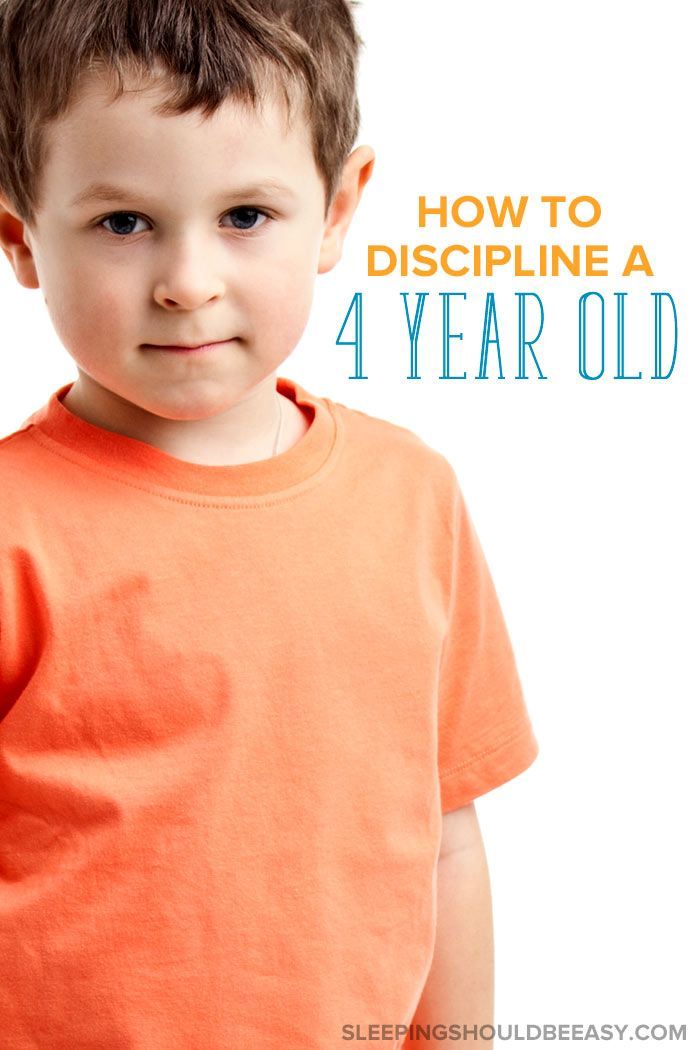 The child understands that an effective way to attract attention is to be rude and behave badly, and therefore begins to beat peers.
The child understands that an effective way to attract attention is to be rude and behave badly, and therefore begins to beat peers.
You should always find time for the child and talk to him more often, without ignoring or depriving him of attention
Unable to cope with negative emotions
Children have their own problems and are no less important than the problems of adults. Children experience in their own way and can often hide it, but emotions must come out. The kid does not realize where his freedom ends and the freedom of another person begins. Children are just learning to empathize. They don't understand that blows can hurt a lot and hurt for a long time, that the other person will feel bad. At their age, it is natural not to control negative emotions. Adults should explain that there is nothing wrong with feeling angry and angry, that they are just emotions that need to be released. nine0003
Let the child have a place where he could scream, cry, get rid of the accumulated negativity inside.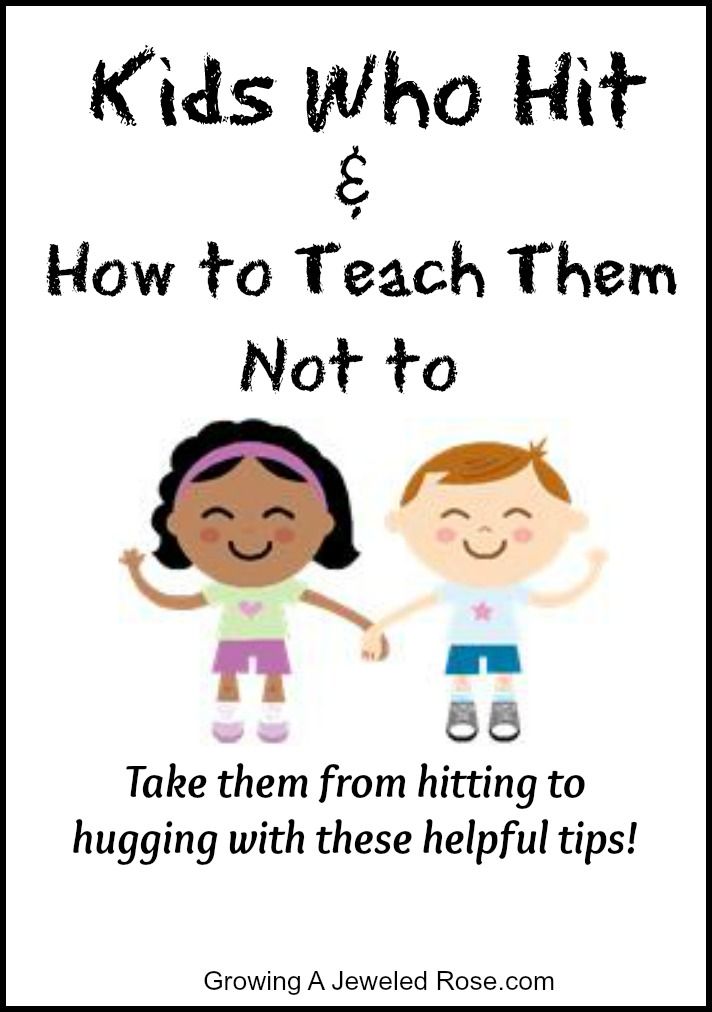
If you don't know what to do when a child fights with other children, try to occupy him - let the energy be directed in the "right direction". It will be useful to enroll him in boxing, wrestling, karate classes, let him play football or hockey.
Negative emotions as a cause of child aggression
Aggressive and active type of temperament
A certain type of child's temperament can predispose to aggressive behavior. Every person is born with one of four types of temperament:
- Melancholics are the least prone to active aggression. Such children are very sensitive, touchy, vulnerable, sometimes not self-confident. Any little thing can unbalance a melancholic child, but they suffer in silence. Such children experience everything within themselves and cannot harm anyone.
- Phlegmatic people also do not have a tendency to active aggression. They are balanced, outwardly calm in any situation, it is very difficult to anger them and unbalance them.
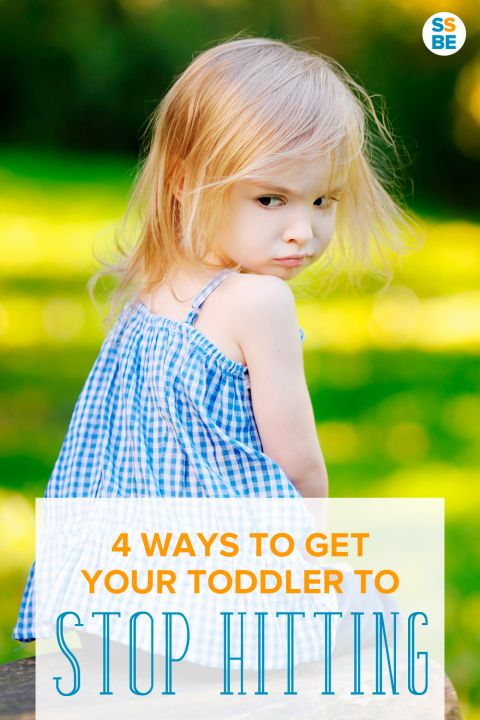 These children are resilient and prefer to keep their emotions in check, even if they feel like hitting someone.
These children are resilient and prefer to keep their emotions in check, even if they feel like hitting someone. - Sanguine people solve all problems calmly, without aggression. Such children are very sociable and optimistic, cheerful and open to this world. A sanguine child will make every effort to solve the problem peacefully. If necessary, the sanguine person can be aggressive, but he is usually able to control his emotions. Since these children are very responsible, guilt over their mistakes can lead them to become passive aggressive. nine0006
- Cholerics are prone to active aggression. Such children are quick-tempered, unbalanced, irritable, extremely emotional. They will first do something in a fit of anger and only then think about how it was necessary to act in this situation. Due to increased excitability and a tendency to frequent mood swings, choleric people are in conflict and most often quarrel with their peers, using physical force.
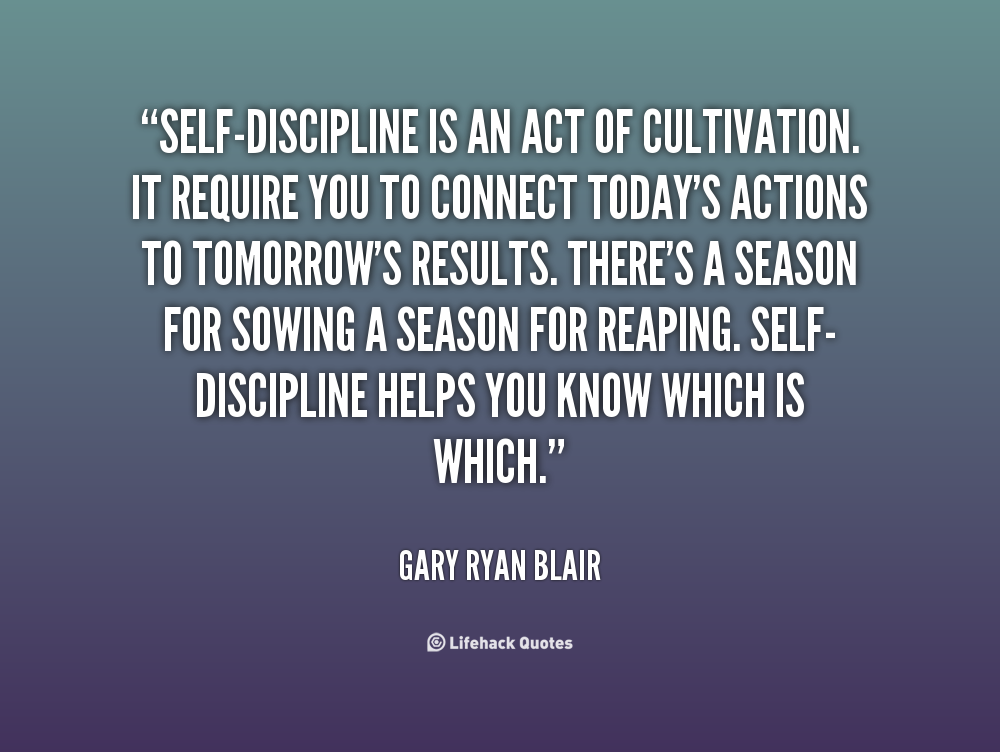
How does the type of temperament affect the child's behavior?
Punishment must be adequate
It is necessary to punish a child for misconduct, but this punishment must be adequate. If you physically punish a child using a belt, or try to solve the problem with screams and insults, then aggression will only increase in him. Even if your child does not listen to you and continues to beat other children, this is not a reason to harm him physically or psychologically.
Only words spoken in a calm voice can be heard
As a punishment, you can limit his communication with other children, but let it be temporary. And if the child has improved in behavior, then it is necessary to notice this in time and focus on it. nine0022 It will not be superfluous to praise the baby! The next time he wants to beat someone, he will think: he remembered your attitude towards his negative actions and will not want to upset you.
Finding out the motives of the child's behavior, you can make an effort and deal with the problem. This is possible if the baby feels warmth, kindness, understanding from adults.
Video on the topic:
In kindergarten, a child beats other children, and at home - me. What to do? nine0001
Of course, any parent will be offended and unpleasant if their child is bullied in kindergarten. But exactly the same feelings are experienced by the parents of the offender himself, if they cannot teach him to control aggression. What to do if your child offends everyone around? Psychologist Tatyana Panina answers.
Question. My son (3.9 years old) beats children in the garden. If someone does not want to play with him or something does not work out, he can hit the one who is standing next to him. My husband and I are against violence, we don’t physically punish our son, we don’t fight ourselves, we carefully monitor its content, there is no TV in the house, there are no aggressive toys (pistols, machine guns) either. He doesn't beat her husband - he hit back a couple of times, sometimes he offends me. Especially if I forbid something, but he wants it. Many times they explained to their son that it is impossible to offend anyone, neither boys nor girls. And so he agrees in the evening, in the morning he says that he will behave well in the garden, he will not offend anyone. And in the evening, when I pick him up, the teachers complain that he offended the guys. I don't know what to do now. nine0003
He doesn't beat her husband - he hit back a couple of times, sometimes he offends me. Especially if I forbid something, but he wants it. Many times they explained to their son that it is impossible to offend anyone, neither boys nor girls. And so he agrees in the evening, in the morning he says that he will behave well in the garden, he will not offend anyone. And in the evening, when I pick him up, the teachers complain that he offended the guys. I don't know what to do now. nine0003
Answer. Rudeness on the part of children is almost always their request for attention. Ask the educators in more detail about such situations, ask them to trace what exactly happens between the children before the child starts to get into a fight. Perhaps the children offend him first, and the teacher pays attention to the quarrel when it is already in full swing. It is important that you have a complete picture of what is happening.
To do this, you can involve a kindergarten psychologist, he will be able to work with children, for example, simulate a conflict situation and draw your attention to some nuances.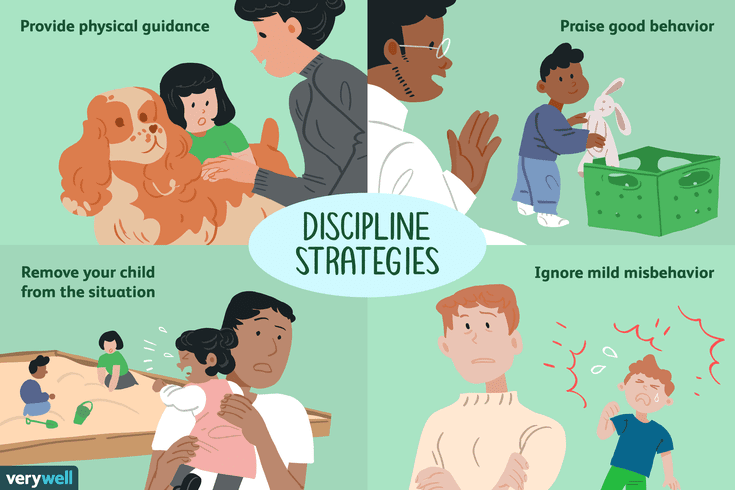 nine0003
nine0003
Now mediation is gaining more and more popularity in education - an alternative method of resolving conflicts when both parties win. While mediation is being used in schools, significant improvements and playful moments are needed for young children. But in any case, it will be useful to look at this situation completely, to understand what other children say, do, which is why the conflict flares up.
If a child says that he will beat others, parents should not scold, but reflect with him
What exactly does he want from other children? Does he like to hit? What does he feel when they beat him? What does he want to achieve by his actions - to declare himself, to show himself?
Perhaps for such a conversation it is worth attracting a specialist - a psychologist who will help structure your interaction and offer assistance in how the child can express himself, help to enter into the game with other children in a peaceful way, without getting into a fight.
Concrete examples of how he can do this are important for the child. If your son wants to attract attention in this way, you need to suggest other ways to him, for example, offer the children his toy, a scenario for the game, somehow interest other children so that they agree to play, and remind him that as soon as he starts to fight, stop playing with him. If a child is really interested in playing with others, he will try not to go into conflict. nine0003
You can also explore the topic of boundaries with a specialist. It is possible that the son has difficulties with their implementation. In the situation with his father, he once felt them and no longer crosses. And in a situation with children, he does not correlate his aggressive behavior and its consequences in the form of refusing to play with him.
Parents are a good example here. In order for a child to learn to see other people's boundaries and respect them, it is necessary to start with oneself, to emphasize and appreciate the son's personal space.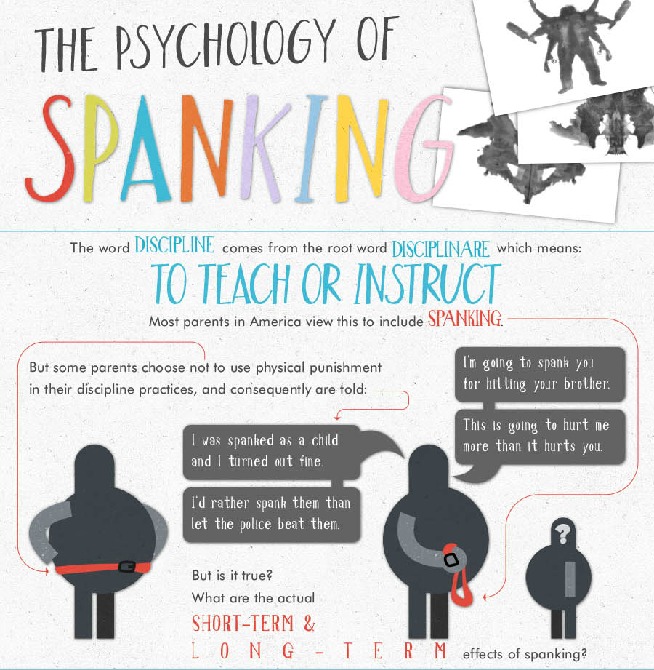 At the age of three, a child is not yet able to put himself in the place of others, but it is important now, by his own example, to show respectful attention to the life of his son. For children, the family is the main example of their behavior in society, so the more involvement and respect the family members show for him, the more sensitive the baby himself becomes to others. nine0003
At the age of three, a child is not yet able to put himself in the place of others, but it is important now, by his own example, to show respectful attention to the life of his son. For children, the family is the main example of their behavior in society, so the more involvement and respect the family members show for him, the more sensitive the baby himself becomes to others. nine0003
In any case, you should not let the situation take its course, hoping that with age this issue will resolve itself. If it is not possible to resolve the situation at the kindergarten level, it is worth resorting to the help of a specialist who could communicate with the child, rule out organic violations, and together find ways to resolve the situation.
Ask your question to Mel, and the editors will find someone who can answer it. Write to our social networks - we read all messages on the pages on Facebook, VKontakte and Odnoklassniki. You can also write to us on Instagram. Answers will be published in order of priority in the "Question - Answer" section.
